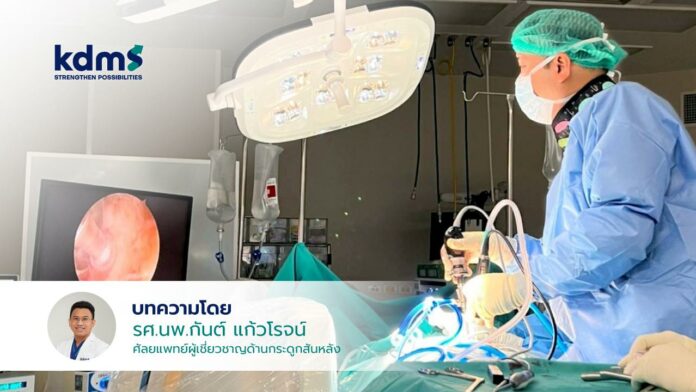
Endoscopic Spine Surgeries: The Ultimate Innovative Option Known for Minimal Incisions Required, Low Pain, and Quick Recovery Time
Health conditions related to the spine are increasingly becoming more prevalent among those within the working age group, as well as senior citizens. Without the proper treatment, or if existing symptoms become persistent or worsen over time, these conditions can lead to significant challenges in their daily lives.
This is, in part, why surgery regularly emerges as a solution for patients in the long run, as they allow affected individuals to resume normalcy in their lives post-operation, and enjoy an increased quality of life.
However, many patients are hesitant to opt for surgeries, especially when the procedures involve operating near sensitive areas like the spinal cord.
Thankfully, with several medical and technological advancements through the years, spinal surgery has become much safer, where procedures also take less of a toll on the body. This means modern surgeries help patients feel less pain, and enjoy a shorter recovery period, with reduced risks of post-surgery complications. One example of medical innovations is endoscope for spine surgeries, which serve as a relatively painless option for patients, with effective results.

The endoscopic spine surgery process involves making a tiny incision and inserting a small, 8 to 10-millimeter tube equipped with a camera into the patient’s body. The high-precision surgery also involves inserting other medical equipment, such as medical bone trimming tools, to move intervertebral discs to make way for the surgery, as well as to stop blood flow during the process.
In the past, endoscopic spine surgeries were only applicable to conditions concerning the lumbar spine, or lower back. At present, however, the procedure can be applied to a vast array of conditions with impressive results. For instance, endoscopes can now be conducted to treat conditions affecting the cervical vertebrae, or neck bone area. Such conditions include:
- Herniated Nucleus Pulposus (HNP) – when part or all of a central portion of an intervertebral disc goes through a structurally weaker part of the disc.
- Spinal Stenosis – the narrowing of space around the spinal cord.
- Spinal instability which results from spinal fusion, together with pedicular screw fixations to keep the spine in place.
Why Are Endoscopic Spine Surgeries Safer than Traditional Surgeries?

- The process involves smaller incisions, meaning recovery wounds are easier to heal from.
- Much lower blood loss, as well as a lower risk of blood loss.
- Minimal pain, as damage to tissue and the surrounding muscles around the spine is greatly reduced.
- Lower risk of infection.
- Much quicker recovery time, averaging around one to two nights at the hospital.

Endoscopic spine surgeries cannot be carried out by any orthopedic surgeon. This is why KDMS Hospital is dedicated to providing all of its patients with access to the best and most experienced medical professionals. We prioritize working with orthopedic surgeons who have extensive expertise in endoscopic spine surgeries, have a deep understanding of the spine, have been through several training programs, and have had experience in conducting surgeries.
Combined with a specialized team in physical medicine and rehabilitation, rest assured that each patient will receive a treatment plan developed by the tandem efforts of these two teams, in order to ensure the most comprehensive recovery from any condition.
Written and arranged by Associate Professor Gun Keorochana, M.D., an experienced orthopedic surgeon specializing in spinal surgeries
















































